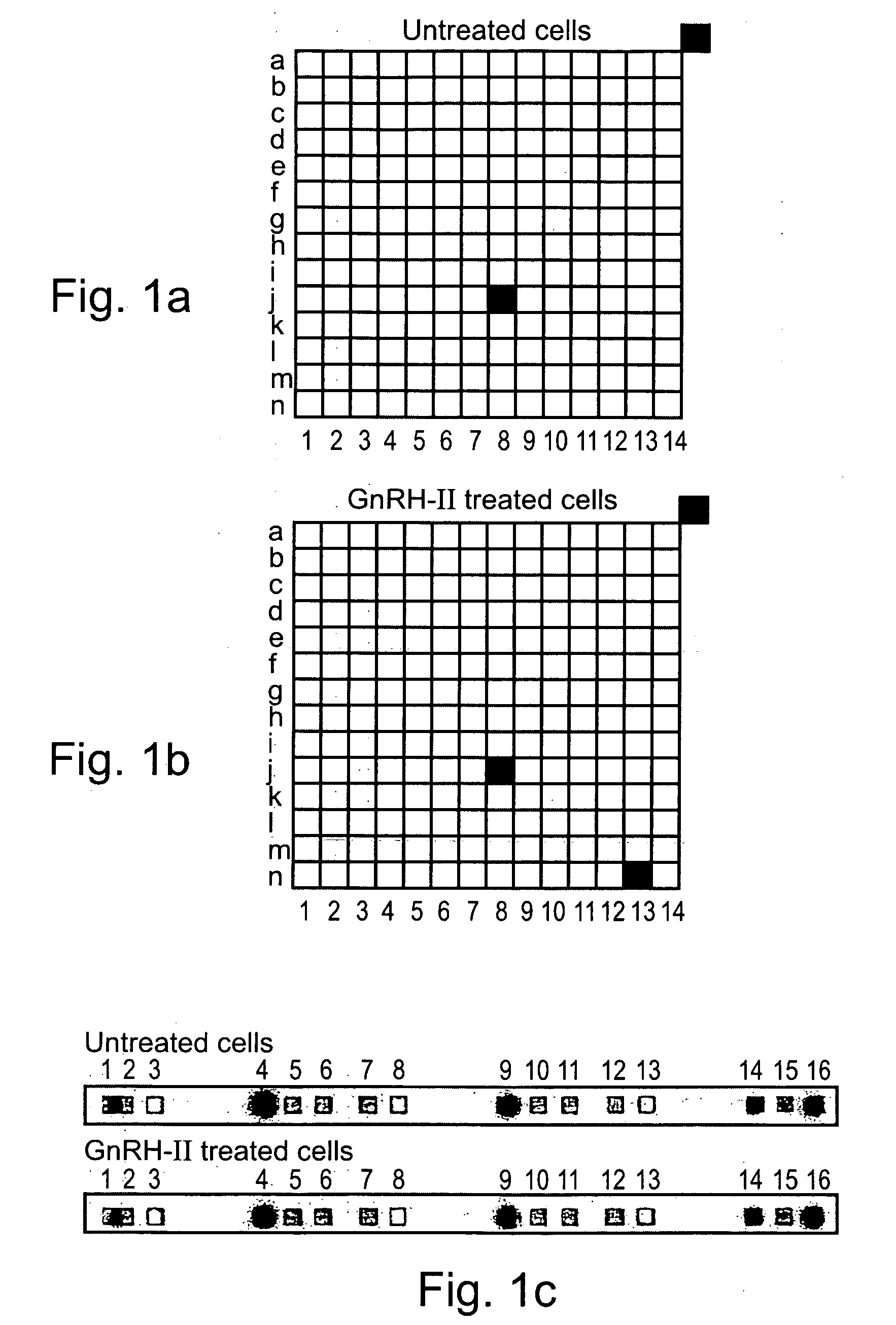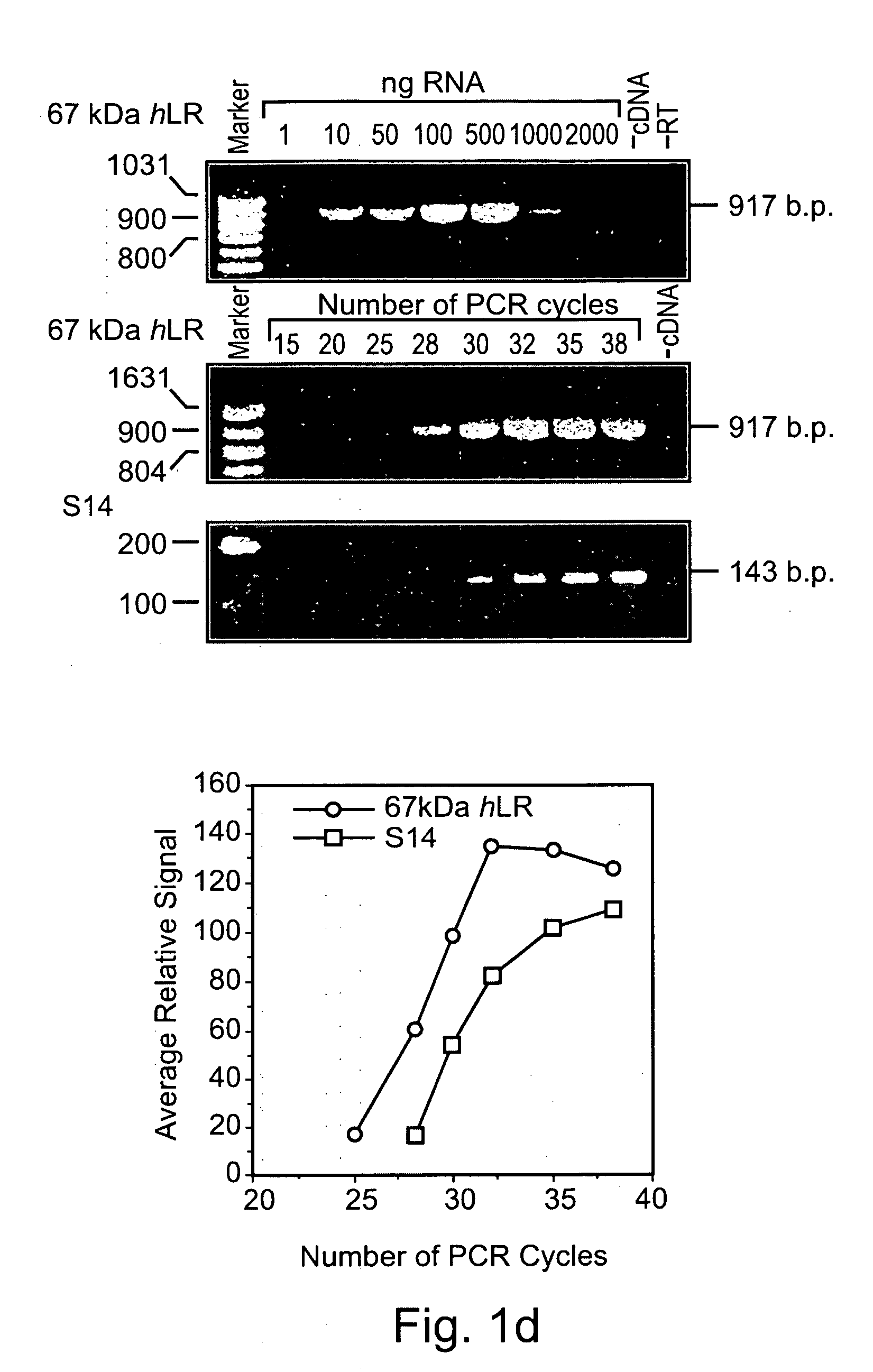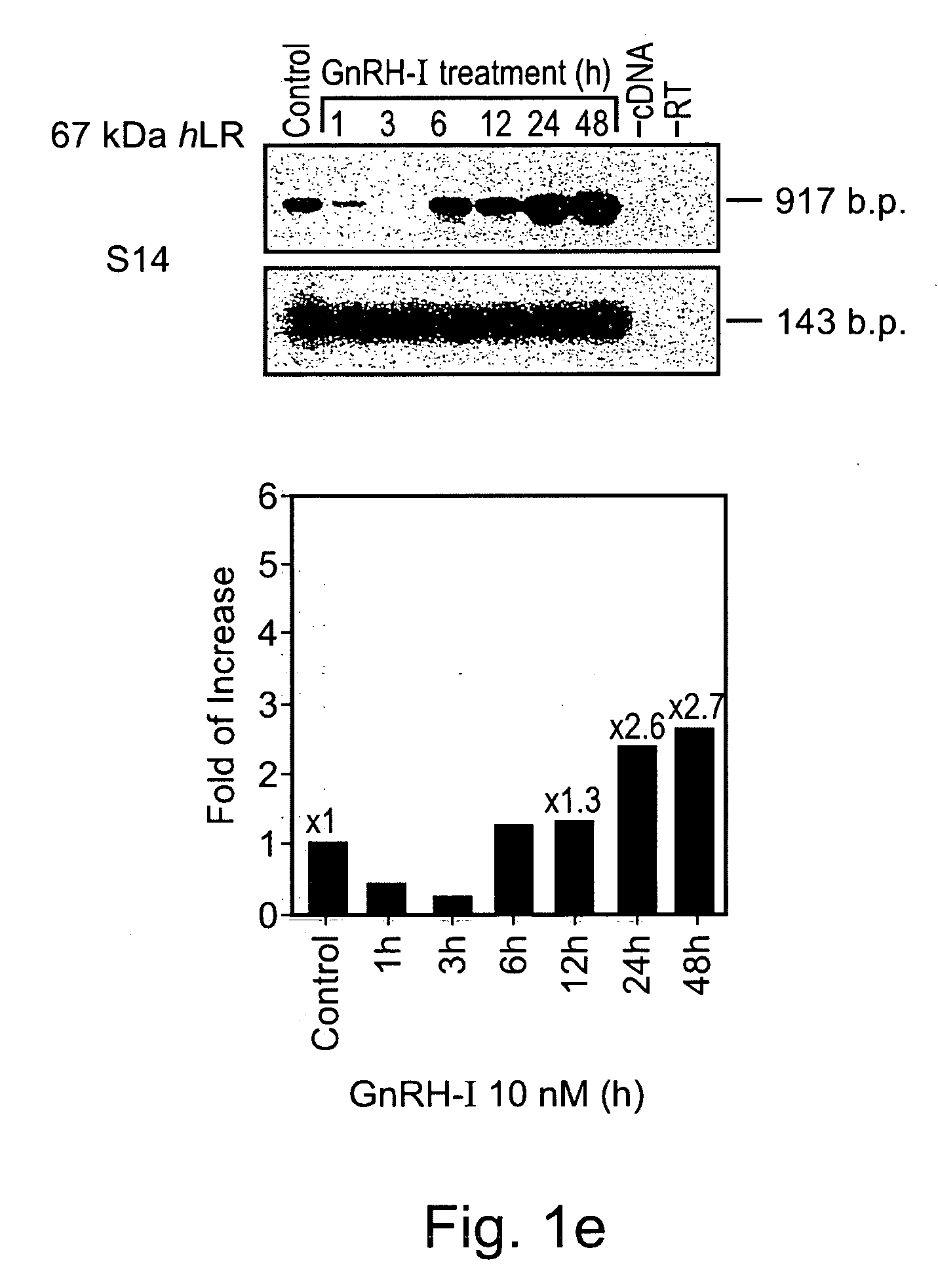Methods and pharmaceutical compositions for gnrh-II and gnrh-II modulation of t-cell activity, adhesion, migration and extravasation
a technology of t-cell activity and pharmaceutical compositions, which is applied in the field of methods and pharmaceutical compositions for gnrhii and gnrhii modulation of t-cell activity, adhesion, migration and extravasation, and can solve the problems of reducing the effect of t-cell activity, causing many adverse clinical consequences, and affecting the effect of leukocyte-endothelial interactions
- Summary
- Abstract
- Description
- Claims
- Application Information
AI Technical Summary
Benefits of technology
Problems solved by technology
Method used
Image
Examples
example 1
T-Cells Respond to Direct Stimulation of GnRH-II by the De Novo Transcription of a Laminin Receptor mRNA
[0311] To explore the possible direct effects of GnRH-II on gene expression by T-cells, resting mouse antigen-specific T-cells were exposed to GnRH-II (10 nM) for 24 hours. Poly A+ RNA was prepared from both GnRH-II-treated and untreated cells and reverse transcribed to 32P-labeled cDNA. Using an Atlas cDNA expression array (i.e. a positively charged nylon membrane spotted with 1200 different cDNAs) for identification of effected genes, the reverse transcribed products were characterized by hybridization to the atlas membranes. The differential pattern of expression between untreated cells and GnRH-II-treated cells was visualized by autoradiography (FIGS. 1A and 1B). The results revealed that GnRH-II induced the over expression of mRNA encoding for several genes, the most prominent being an mRNA encoding for a protein (coordinate n13 in FIGS. 1A and 1B) known as a non-integrin 67...
example 2
Both GnRH-I and GnRH-II Increase the Expression Level of the 67 kDa Laminin Receptor in Normal Human T-Cells
[0315] To confirm the results of the atlas cDNA expression array, the level of expression of the 67 kDa LR was analyzed by quantitative RT-PCR in normal human T-cells. Following calibration of the experimental conditions for the quantitative RT-PCR assay (FIG. 1D), the level of the laminin receptor mRNA was determined in normal human T-cells stimulated for increasingly longer periods (1 to 48 hours) with either GnRH-II or GnRH-I. The results, presented in FIGS. 1E and 1F for GnRH-I and GnRH-II-treated cells respectively, show that the LR mRNA levels in the GnRH-II and GnRH-I treated cells were significantly altered, in a time-dependent manner, when compared to untreated cells. The radioactive bands were quantified using a phosphorimager and normalized according to S-14 (ribosomal protein gene) values. The results, presented as fold increase over control group values, are show...
example 3
GnRH Augments the Surface Expression of the 67 kDa Laminin Receptor on Normal Human T-Cells
[0317] To determine whether GnRH-II and GnRH-I trigger not only the gene transcription but also the surface expression of the 67 kDa LR, normal human T-cells were treated with either GnRH-II or GnRH-I for 18-66 h and subjected to double immunofluorescence staining using a monoclonal antibody (mAb) that is specific for the 67 kDa LR, and a phycoerythrin (PE)-conjugated anti-TCRαβ mAb (to confirm the T-cell origin of the cells). FIGS. 2A-2C show the staining for the untreated, GnRH-I treated and GnRH-II treated T-cells, respectively. The FACS profiles can be interpreted by division according to four categories: 1. Negative staining for both mAbs (double negative, lower left quadrant); 2. Single positive staining only with the anti-LR mAb (lower right quadrant), 3. Single positive staining only with the anti-TCR mAb (upper left quadrant); 4. Double positive staining with both mAbs (upper right q...
PUM
 Login to View More
Login to View More Abstract
Description
Claims
Application Information
 Login to View More
Login to View More - R&D
- Intellectual Property
- Life Sciences
- Materials
- Tech Scout
- Unparalleled Data Quality
- Higher Quality Content
- 60% Fewer Hallucinations
Browse by: Latest US Patents, China's latest patents, Technical Efficacy Thesaurus, Application Domain, Technology Topic, Popular Technical Reports.
© 2025 PatSnap. All rights reserved.Legal|Privacy policy|Modern Slavery Act Transparency Statement|Sitemap|About US| Contact US: help@patsnap.com



